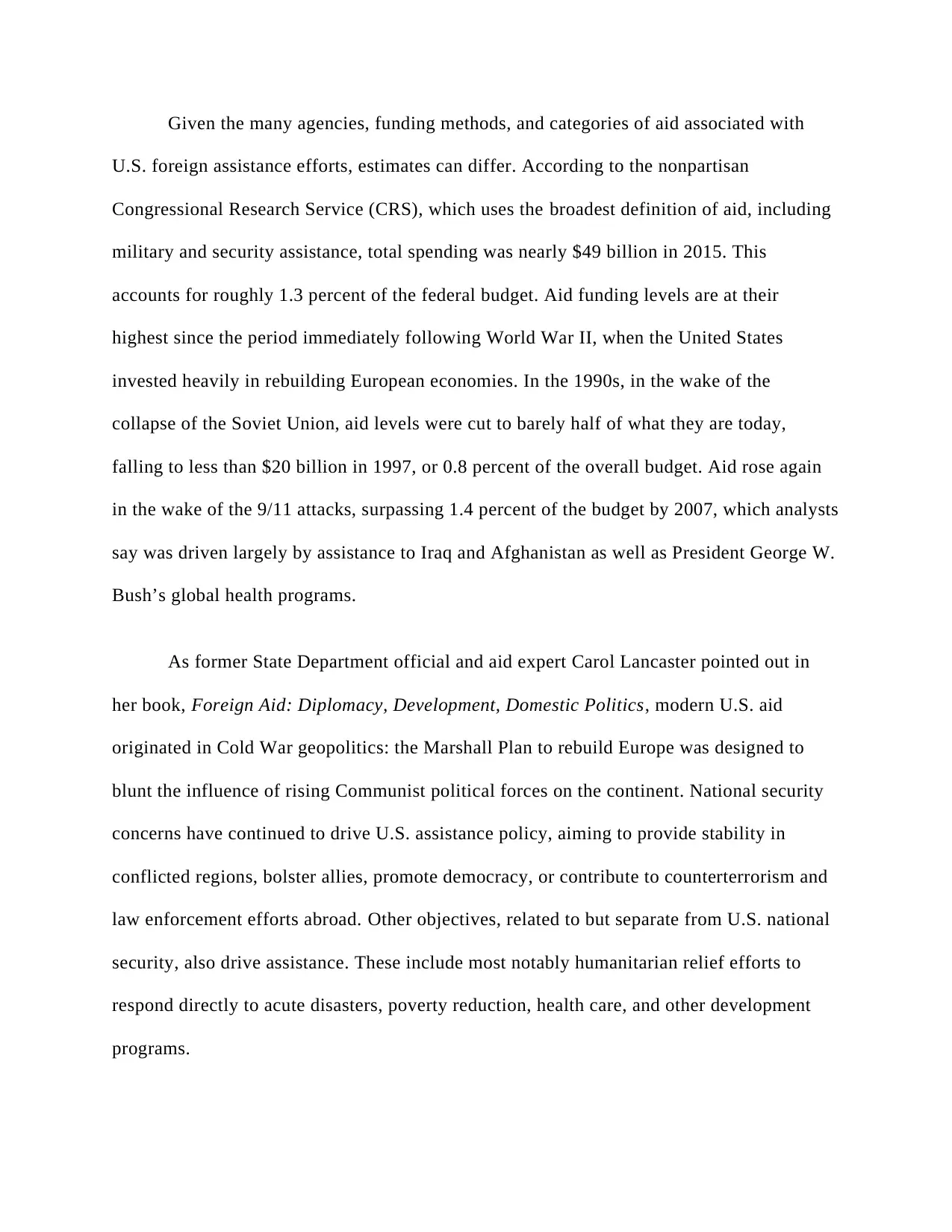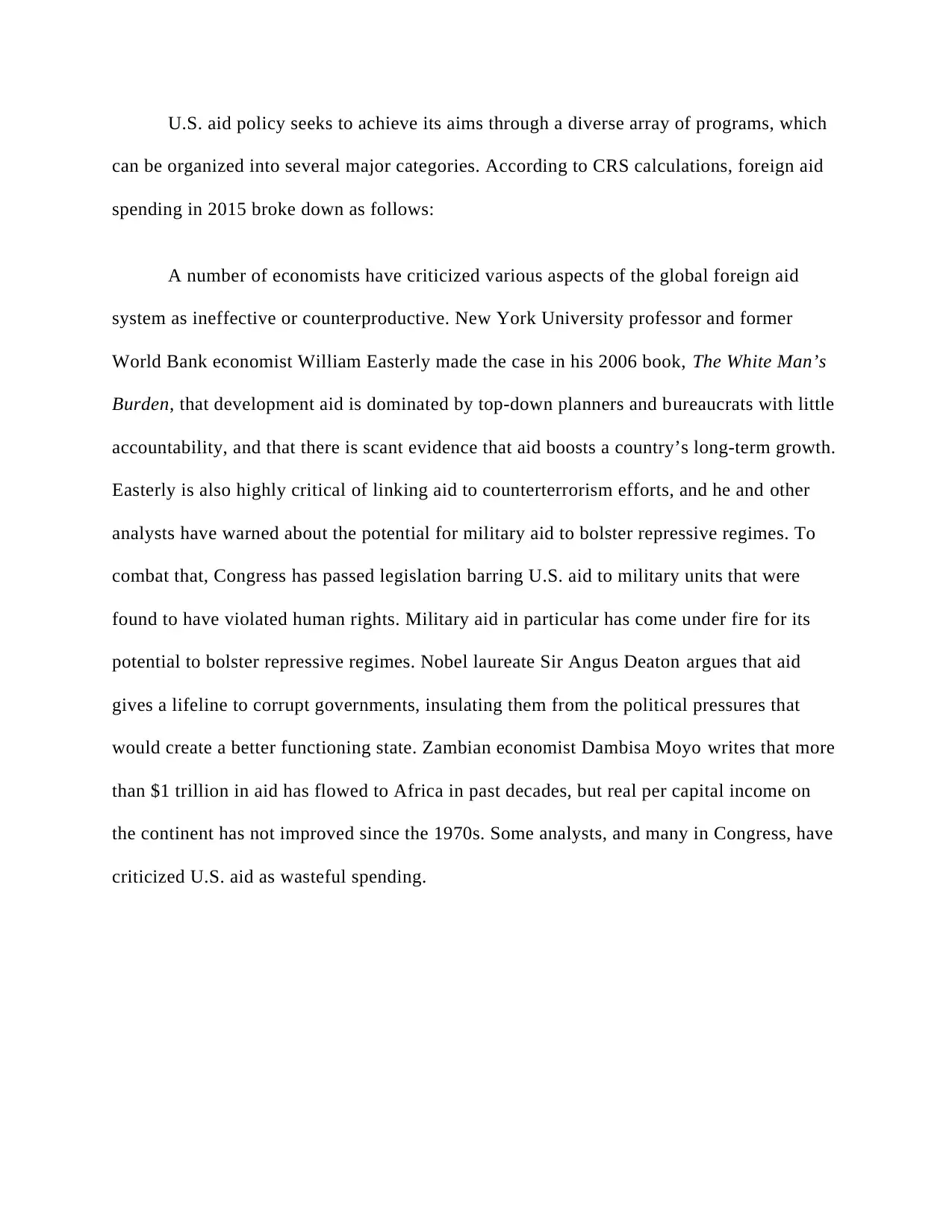US Foreign Aid Analysis Report
VerifiedAdded on 2019/09/13
|2
|583
|90
Report
AI Summary
This report examines the history and current state of US foreign aid, citing data from the Congressional Research Service (CRS) showing spending levels and their fluctuations over time. It highlights the dual motivations behind aid: national security concerns (e.g., countering communism, stabilizing conflict zones) and humanitarian/development goals (e.g., poverty reduction, healthcare). The report then delves into criticisms of the aid system, referencing prominent economists like William Easterly and Dambisa Moyo who argue that aid can be ineffective, counterproductive, or even bolster corrupt regimes. The report concludes by summarizing the debate surrounding the effectiveness and allocation of US foreign aid, noting concerns about waste and the potential for aid to inadvertently support repressive governments.
1 out of 2



![[object Object]](/_next/static/media/star-bottom.7253800d.svg)